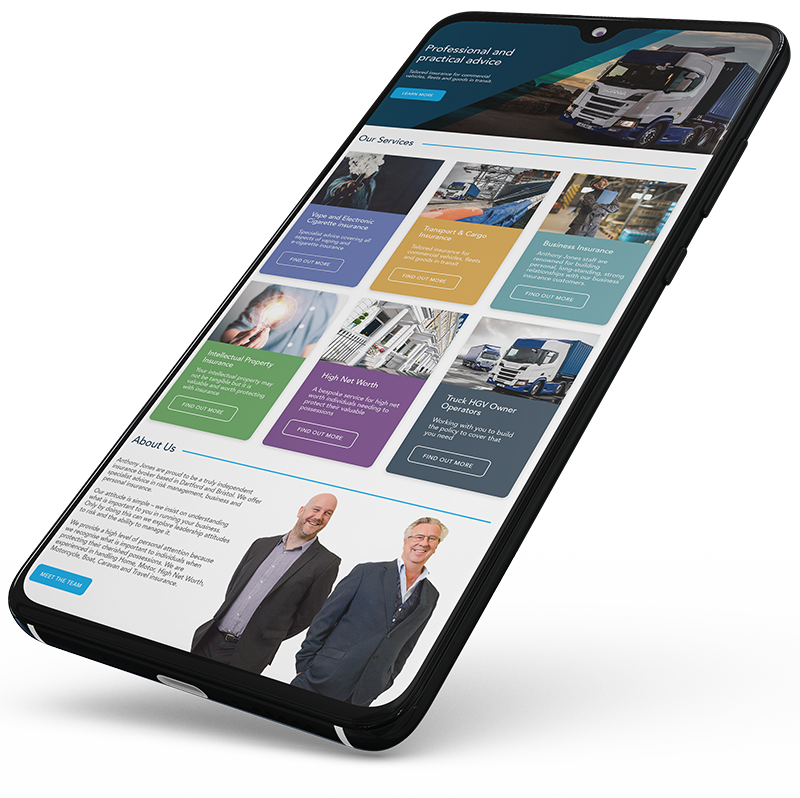If you drive an HGV, there are certain items you must carry at all times while on the road. And if you’re a fleet manager, it’s up to you to ensure that all of the drivers in the fleet know what’s required of them.
In this post we’ll outline what items must be carried by law when driving an HGV. For more information on how we can help you and your fleet, get in touch with us on 020 8290 9099 or email us at commercial.motor@anthonyjones.com.
HGV Vehicle Checks and Roadside Inspections
Authorised inspectors and police officers routinely carry out checks on HGVs, they’ll be looking to check:
- Your vehicle meets all applicable regulations for roadworthiness
- Key information about your vehicle’s service history
- Your driving hours
There can be severe penalties if you cannot produce the necessary documents at such inspections. There may also be fines to pay if you are found driving without certain items of road safety equipment.
When Can HGV Checks and Inspections Happen?
These inspections may take place:
- During routine servicing or repairs at a garage or workshop.
- Following an accident or an incident on the road.
- Unexpectedly, at a roadside checkpoint or at a weighbridge station.
This is why it’s vital to ensure you have these documents and other items on you at all times when driving an HGV – because you never know when you might need to produce them.
What Items Must Be Carried By Law When Driving an HGV?
The documents, and other items, that inspectors and officials may ask to see during an inspection include:
- Driving Licence
- Driver Qualification Card (DQC)
- Tachograph card
- Vehicle documents
- Safety equipment
Below we’ll list the documents, with more detail about why you need to provide them and what could happen if you don’t.
- Driving Licence
Your driving licence confirms that you are qualified to drive the HGV. If you cannot produce your driving licence when an authorised person asks you to, you will have to report to a police station within seven days. So, while it’s not strictly a legal necessity to have your driving licence on you at all times while driving an HGV, doing so may save you some time.
If you fail to produce the driving licence within seven days of being asked, though, you could receive a fine, a licence suspension, and you may even end up in court.
- Driver Qualification Card (DQC)
In addition to your driving licence, you may also have to produce your DQC, to demonstrate that you have completed the relevant CPC training for your role.
- Tachograph Card
Your digital tachograph card will allow officials to monitor your driving and resting times, to ensure you are complying with the relevant drivers’ hours regulations. Your digital tachograph card will also provide details of any other work you’ve completed over a set period (such as travelling and paperwork), along with information on holidays and sick days.
If you do not use a digital tachograph, you will have to find another means of evidencing your drivers’ hours over a given period. This may include analogue tachograph charts, along with a diary or logbook to evidence any work that you did not record on your tachograph.
If you are using a digital tachograph, you must have enough spare tachograph rolls to last the whole journey. If you are using an analogue tachograph, you will need to carry enough charts as necessary to record your daily activity.
Failing to produce your tachograph card, along with spare rolls or charts, may be classed as a level 4 tachograph infringement. This can carry a maximum fine of £2,500 per infringement. Read our full guide to tachograph infringements here.
- Vehicle Documents
You should carry copies of the following documents in your HGV at all times:
- V5C document – to verify who owns the vehicle, and its registration.
- Insurance certificate – to verify that you have adequate cover to drive the HGV.
- Roadworthiness certificate – This will confirm that the HGV meets the minimum standards for roadworthiness.
- Defect book – You are required to record any defects you find on your vehicle before starting any journey, and you should record anything you find in your defect book. An official may request to see your defect book during an inspection. And if you recorded a defect and decided to drive regardless, they will want to know why.
- Safety Equipment
Finally, there are certain items of safety equipment that you should keep in your HGV at all times. Officials may look for these items during an inspection, or ask you to produce them. You may face a penalty, along with points on your licence, if you cannot produce these items when requested:
- First aid kit – plus, the kit must be fully stocked, with every item in code
- Fire extinguisher
- Hi-vis clothing
- If you are transporting hazardous materials, you may also be required to carry gloves, safety goggles, and a hard hat onboard
- Warning triangle – to alert other motorists to your location in the event of an accident
Do Your Drivers Know The Rules?
As a fleet manager, you are responsible for ensuring that your drivers comply with all relevant regulations.
John Donaghy, Senior Manager, Commercial Motor and Fleet Risks says:
“As we’ve seen, there can be severe penalties if any drivers are caught driving without certain documents, or other items. With a good driver communication strategy, you can ensure that every driver knows what’s expected of them, and why.
“The good news is that if you can evidence the systems you use to ensure your drivers comply with the relevant legislation, it could lead to savings on the cost of your commercial motor insurance.
“At Anthony Jones, we’re always happy to discuss strategic risk management with fleet managers. We’ll show you how you can get the best for your fleet, and we’ll help you access the specialist cover you need at a competitive price.”
For more information on how we can help you and your fleet, get in touch with us on 020 8290 9099 or email us at commercial.motor@anthonyjones.com.


